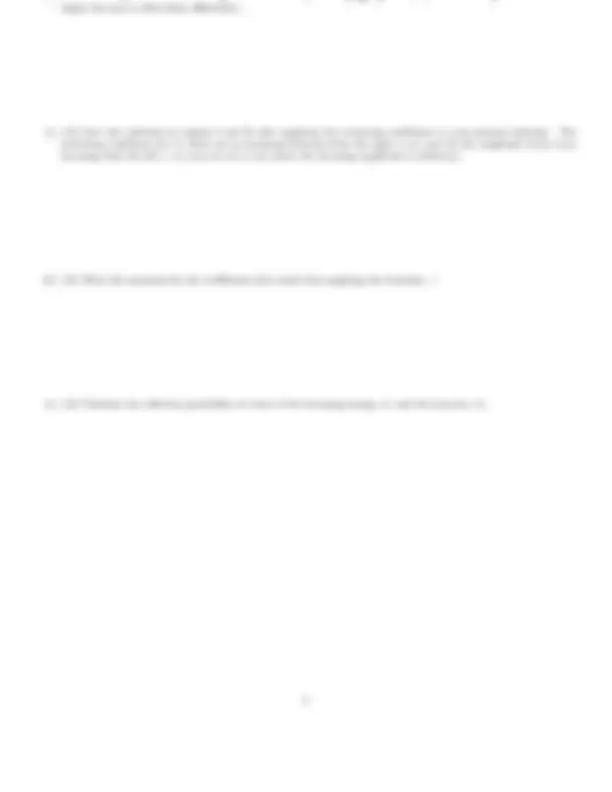



Study with the several resources on Docsity

Earn points by helping other students or get them with a premium plan


Prepare for your exams
Study with the several resources on Docsity

Earn points to download
Earn points by helping other students or get them with a premium plan
Community
Ask the community for help and clear up your study doubts
Discover the best universities in your country according to Docsity users
Free resources
Download our free guides on studying techniques, anxiety management strategies, and thesis advice from Docsity tutors
The third exam for the modern physics course, focusing on topics such as wavefunction normalization, probability calculations, uncertainty in mass measurement, and quantum reflection from a step-down potential. Students are required to evaluate constants, calculate probabilities, and expectation values, as well as solve schrodinger equations and apply scattering conditions.
Typology: Exams
1 / 3

This page cannot be seen from the preview
Don't miss anything!


Exam III October 24, 2002
Show all work.
I. Suppose the wavefunction of an electron is given by
ψ(x) =
A(1 − x^2 /a^2 ) if −a < x < +a 0 otherwise
(a) (10) Evaluate the constant A such that the wavefunction is normalized.
(b) (10) Calculate the probability that the electron is between −a/2 and +a/2.
(c) (10) Calculate the expectation value of the kinetic energy (p^2 /(2m)).
in the time available to make a measurement of the mass, what is the uncertainty in the rest mass of the neutral pion? (Give your answer in M eV /c^2 .)
III. Consider an electron scattering from the step-down potential given by:
V (x) =
0 if x < 0 (region I) −V 0 if x > 0 (region II)
where V 0 is a positive constant:
x
Region I (^) Region II
Suppose the electron is incoming from the left (x = −∞) only (NO electrons incoming from the right). Classically, the electron would never reflect off a step-down potential, but quantum mechanically it can. Calculate the probability that the electron reflects off the step by executing the following steps:
(a) (10) Write the Schroedinger equation for regions I and II appropriate to this problem (DON’T write the solution yet).